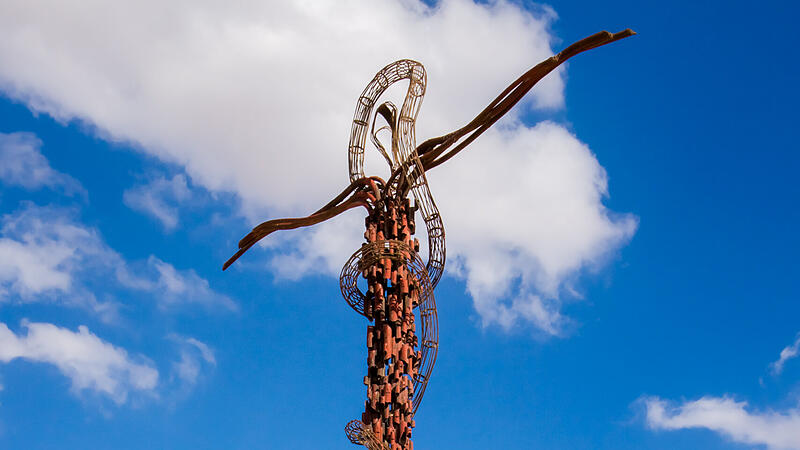Image: Jordan Tourism Board

Image: Jordan Tourism Board
The city of Madaba, located a good 30 kilometers south of the Jordanian capital Amman, is known for its rich Byzantine history and its artistic mosaics. It is also considered a starting point for a trip to Mount Nebo. At 700 meters high, it is not a giant, but it is rich in history. Moses is said to have seen the “Promised Land” for the first time and died here, according to the Bible. The prophet is still commemorated today by a church on the top of the mountain, from which you can see over Jericho, the Dead Sea, the West Bank and the Jordan.
The 70,000-person city of Madaba, at the foot of the Biblical Mountain, is easy to explore on foot. The modern city was founded in the late 19th century when several Christian families migrated here from Karak in southern Jordan. They built their houses on the foundations of the ancient buildings and discovered numerous, well-preserved mosaics. Some of these houses are still in private hands – with ancient mosaics in the living room or bedroom – others are now archaeological sites or restaurants that those interested can now visit on the new city tour.
Lay mosaics yourself
A new tour through Madaba was developed together with the German Society for International Cooperation (giz). On this tour, travelers learn about the numerous mosaics, historical sites, local crafts and modern life. The walk through the city begins in a restored, listed building from 1907. The Madaba Visitor Center not only gives visitors a brief introduction to the city’s history, but is also home to the historic Beit Al Beiruti House, where you can visit You can take part in mosaic workshops or try on traditional clothing. Next door at the Madaba Institute for Mosaic Art and Restoration, visitors can immerse themselves in the ancient craft and learn how to lay mosaics.

Image: Jordan Tourism Board
Continue through the Archaeological Park, which showcases the ancient structures along a Roman road, including Byzantine churches and mosaic floors. The so-called tourism route attracts with souvenir shops, traditional craft shops and restaurants. The new city tour also includes the Church of the Holy Martyrs, the so-called “Burnt Palace”, which got its name after a fire in the middle of the 8th century, and the Church of St. George. The famous mosaic map of the Holy Land is located here. Dating from the 6th century, it is the oldest surviving map of the Holy Land ever found. The mosaic shows cities, towns and landscapes of the biblical areas on both the western and eastern sides of the Jordan.
On the street of lovers
A few streets away, the Carob House restaurant serves delicious local specialties made from fresh ingredients from local farmers and producers. In the Kawon bookstore, the owner serves reading material as well as coffee and tea before the tour continues on King Abdullah Street. The families of Madaba once went for a walk here in the evenings: the marriageable young men dressed up for the occasion in order to arouse the interest of the young ladies who lived there and who looked out of their windows onto the street. The street was then called “Sharea Al Ushaq” – Street of Lovers.
The tour ends at the Church of the Apostles, where the Greek goddess Thalassa and numerous animals and plants are immortalized in mosaics from 568 AD.
- Info: visitjordan.com
My themes
For your saved topics were
new articles found.

info By clicking on the icon you can add the keyword to your topics.
info
By clicking on the icon you open your “my topics” page. They have of 15 keywords saved and would have to remove keywords.
info By clicking on the icon you can remove the keyword from your topics.
Add the topic to your topics.
Source: Nachrichten




